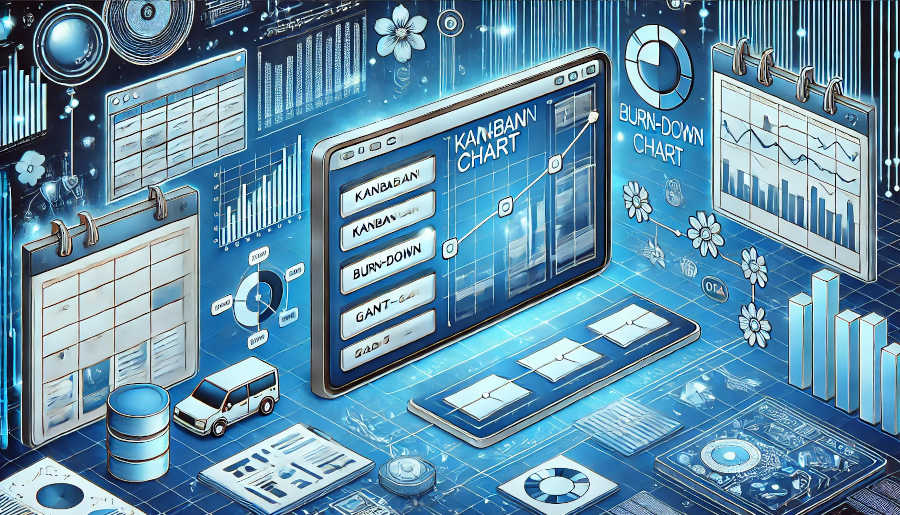Understanding IPD at Huawei
Huawei's IPD is a comprehensive and integrated approach to product development. It encompasses every stage of the product lifecycle, from concept generation to market launch and beyond. At its core, IPD emphasizes cross-functional collaboration. Different departments such as R&D, marketing, sales, and manufacturing are no longer isolated silos. Instead, they work together in a coordinated manner. For example, during the early concept phase, marketing teams can provide valuable insights into market trends and customer needs. This information is then used by R&D to design products that are not only technologically advanced but also meet the demands of the market. This cross-functional communication helps in avoiding costly mistakes and rework later in the development process.
Moreover, IPD at Huawei is based on a set of well-defined processes and metrics. These processes ensure that each stage of product development is carried out in an orderly and efficient manner. Metrics are used to measure the performance of the development teams, such as cycle time, quality of the product, and customer satisfaction. By closely monitoring these metrics, Huawei can identify areas for improvement and take corrective actions promptly. This data-driven approach has been crucial in continuously enhancing the efficiency of the product development process.
Another important aspect of Huawei's IPD is the focus on resource management. The company allocates resources effectively across different projects based on their strategic importance and potential return on investment. This ensures that resources are not wasted on projects that may not yield significant results. By having a clear understanding of resource requirements at each stage of development, Huawei can optimize its resource utilization and accelerate the development process.
Key Components of Huawei's IPD
One of the key components of Huawei's IPD is the product strategy and planning. Huawei invests a great deal of time and effort in formulating a clear product strategy. This involves analyzing market trends, competitor offerings, and technological advancements. Based on this analysis, the company defines its product portfolio and roadmap. A well-defined product strategy provides a clear direction for the development teams. It helps in aligning the efforts of different departments towards a common goal. For instance, if the product strategy is to focus on 5G technology leadership, all aspects of product development, from R&D to marketing, will be centered around this goal.
The integrated product team (IPT) is another vital component of Huawei's IPD. IPTs are cross-functional teams responsible for the end-to-end development of a product. These teams include representatives from various departments, each bringing their unique expertise. The IPT structure promotes seamless communication and collaboration. Team members can quickly address issues and make decisions without having to go through multiple layers of bureaucracy. This agility in decision-making is essential in a fast-paced industry like telecommunications. For example, when developing a new smartphone, the IPT can quickly resolve any compatibility issues between the software and hardware components, ensuring a smooth development process.
In addition, Huawei's IPD includes a robust quality management system. Quality is built into every stage of the product development process. From the design phase to manufacturing and testing, strict quality standards are adhered to. This proactive approach to quality management helps in reducing defects and improving the overall reliability of the products. By investing in quality upfront, Huawei can avoid costly recalls and customer dissatisfaction later. For example, in the production of network equipment, rigorous testing procedures are carried out to ensure that the products can withstand harsh operating conditions and provide reliable performance.

Impact on Product Development Efficiency
Huawei's IPD has had a profound impact on product development efficiency. Firstly, it has significantly reduced the time-to-market. By streamlining the development process and promoting cross-functional collaboration, Huawei can bring products to the market much faster than its competitors. For example, in the highly competitive smartphone market, Huawei has been able to quickly introduce new models with the latest features and technologies. This speed in product launch allows the company to capture market share and stay ahead of the competition.
Secondly, IPD has improved product quality. The focus on quality at every stage of development has led to products that are more reliable and user-friendly. This has enhanced Huawei's brand reputation and customer loyalty. Customers are more likely to choose Huawei products knowing that they can expect high quality. For instance, Huawei's telecommunications equipment is known for its stability and performance, which is a result of the strict quality management in the IPD process.
Moreover, IPD has also optimized resource utilization. By effectively allocating resources and avoiding waste, Huawei can achieve more with the same amount of resources. This has led to cost savings and increased profitability. For example, in R&D, resources are directed towards projects that have the highest potential for success, ensuring that the company's investment in innovation yields maximum returns.
Challenges and Solutions in Implementing IPD
Implementing IPD at Huawei was not without challenges. One of the major challenges was changing the organizational culture. Traditionally, departments in many companies worked in isolation, and there was a lack of collaboration. At Huawei, breaking down these silos and promoting a culture of cross-functional teamwork was a significant hurdle. To overcome this, the company launched extensive training programs and communication initiatives. Employees were trained on the importance of collaboration and how to work effectively in cross-functional teams. Regular communication channels were established to encourage information sharing and cooperation among different departments.
Another challenge was integrating different systems and processes. Huawei operates in a complex global environment with multiple business units and diverse technologies. Integrating various systems and processes to work in harmony under the IPD framework was a complex task. The company invested in advanced information technology systems and software to enable seamless integration. These systems allowed for real-time data sharing and collaboration across different teams and locations.
Finally, managing the expectations of different stakeholders was also a challenge. Stakeholders such as customers, investors, and employees had different expectations regarding product development. Huawei had to balance these expectations while implementing IPD. The company engaged in regular communication with stakeholders to keep them informed about the progress of product development and the benefits of IPD. By setting clear expectations and involving stakeholders in the process, Huawei was able to gain their support and cooperation.
Conclusion
Huawei's Integrated Product Development (IPD) system has been a game-changer in improving product development efficiency. Through its emphasis on cross-functional collaboration, well-defined processes, and effective resource management, IPD has enabled Huawei to bring products to market faster, improve product quality, and optimize resource utilization. Despite the challenges faced during implementation, Huawei has successfully overcome them through strategic initiatives such as cultural transformation, system integration, and stakeholder management. As the technology landscape continues to evolve, Huawei's IPD will likely continue to adapt and play a crucial role in the company's future success. Other companies can also learn valuable lessons from Huawei's experience with IPD and apply similar principles to enhance their own product development processes. By doing so, they can improve their competitiveness in the global market and drive innovation in their respective industries. The success of Huawei's IPD serves as an inspiration for organizations aiming to achieve excellence in product development.
ARTICLE TITLE :How Huawei's IPD improves product development efficiency ,AUTHOR :ITpmlib

















